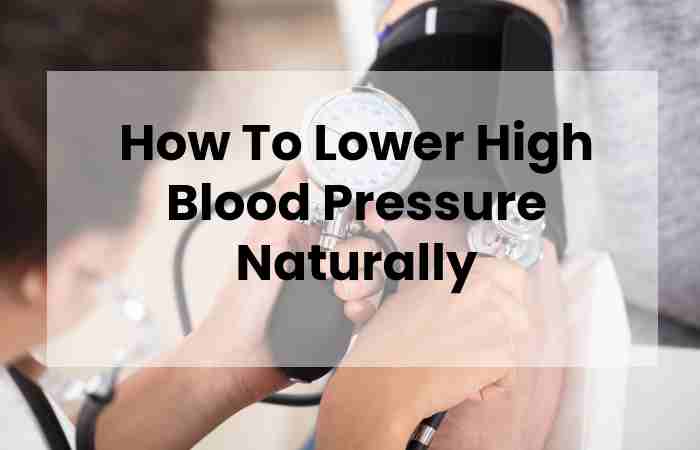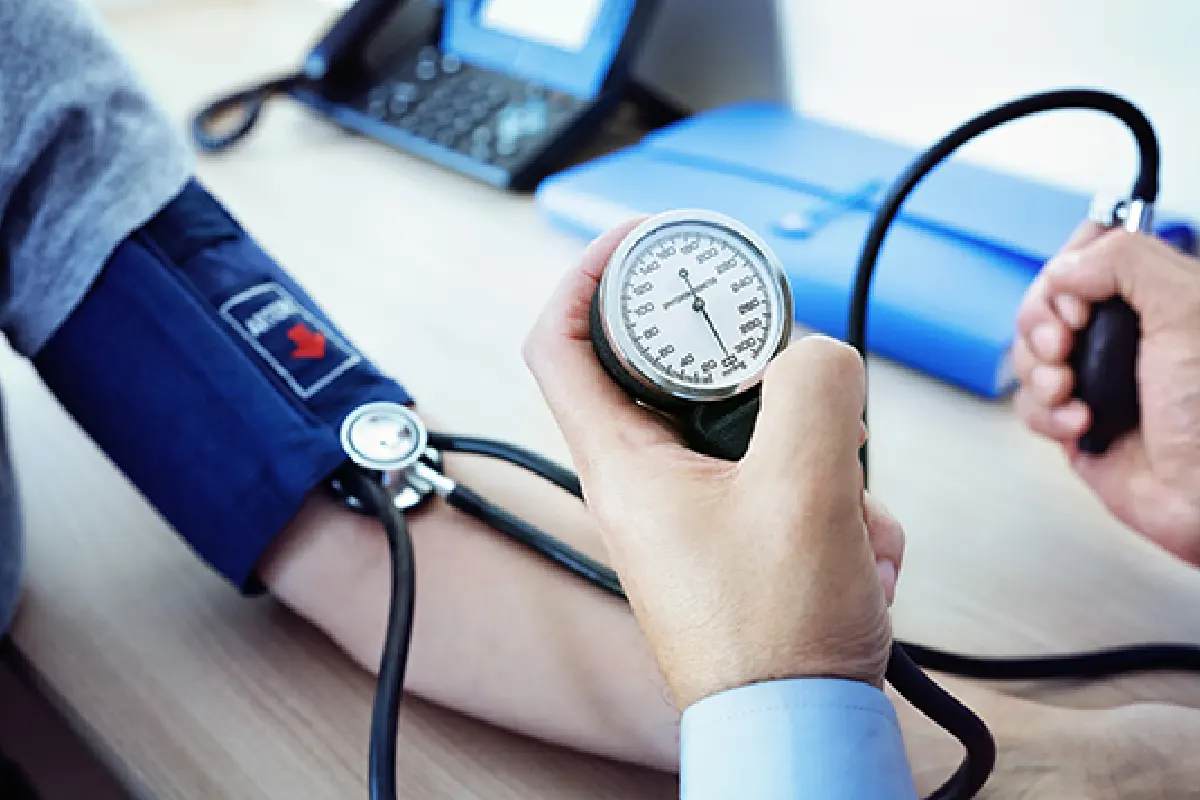Tips To Reduce High Blood Pressure – Your blood pressure is a pointer to your total health, so monitoring it regularly—and understanding what the numbers mean is essential, especially if you’re at risk for hypertension or high blood pressure.
Table of Contents
How To Lower High Blood Pressure Naturally
High blood pressure should never remain ignored, as it can lead to health complications, heart disease, retinopathy (eye disease), chronic kidney disease, and even death. An at-home blood pressure monitor is easy to keep tabs on your blood pressure levels and ensure they aren’t in an elevated range.
An array of blood pressure screens out there make tracking your readings easy, and once you know your numbers, you can take the essential steps to get them within a healthy range.
While medications may remain necessary to lower your blood pressure, reducing high blood pressure at home is possible with some devotion. Even if you’re on doctor-prescribed medicines, you can take steps to lower your blood pressure naturally.
8 Tips for Ways to Reduce High Blood Pressure at Home
In addition to determining whether you want medications, which you should discuss with your doctor, healthy life choices can significantly reduce high blood pressure. Try incorporating the subsequent changes and habits into your daily life.
1. Lose Weight if You’re Overweight
Weight loss is essential to reducing high blood pressure, especially for people with obesity, as it’s a decisive risk factor for hypertension. Dr. Mehta says overweight people can have a two- to six-fold increase in the risk of developing hypertension.
“With less weightiness, the heart and arteries do not have to work as hard,” says Dr. Desai. “The heart muscle and the strengths in the arteries do not thicken. Thickening containers increase blood pressure because of reduced blood vessels’ giving or elasticity.”
Talk to your doctor or listed dietitian about a safe weight loss plan that will work for you, or consider trying a provisioned app like Noom. “Even diffident weight loss in these patients—4 to 10 pounds—is related to significantly lower blood pressure levels,” says Dr. Mehta. However, a 2013 study of extra than 740 people created long-term reductions in blood pressure only persisted with weight loss exceeding 2% of the person’s initial weight
2. Exercise
Regular exercise aids in weight loss and helps decrease high blood pressure. For example, a 2016 study found blood pressure decreased in the hours after an exercise session regardless of a person’s age, sex, and other characteristics. This effect can result in “anywhere between a 10 and 15 mmHg reduction in systolic blood pressure levels.
Most doctors endorse at least 30 minutes of moderate-intensity aerobic exercise each day. “Aerobic exercise gets the heart rate up gradually and consistently, helps stretch the heart and arteries, and increases blood flow to the organs,”
If you can’t do 30 minutes, Recommend at least 15 to 20 minutes daily, five to seven days a week. Some aerobic exercise options comprise walking, running, swimming, using an indirect machine, cycling, and playing tennis.
3. Decrease Your Salt Intake
“Salt is the opponent of high blood pressure,” When you overeat salt, it increases the fluid that enters the bloodstream and arteries from the surrounding tissue, which raises the pressure in the streets.
While you may not have to eliminate salt from your diet, avoid foods high in salts like chips, French fries, salted nuts, soups, store-bought salad dressings, treated foods, and cheese.
4. Avoid Excess Caffeine
Drinking too considerably coffee or too many energy drinks that comprise caffeine isn’t recommended for persons with high blood pressure. “Caffeine is a form of adrenaline,” says Drs. “It constricts the veins and raises the heart rate, increasing blood pressure.”
If you take high blood pressure, ask your medic whether you need to adjust your morning coffee habit, as Drs say high levels of caffeine can deteriorate blood pressure control. The Food and Drug Administration (FDA) reflects the equivalent of four cups of coffee daily (400 milligrams) as safe for the general population. Still, most experts recommend 200 milligrams or less (two cups of coffee) for people with established hypertension.
5. Drink More Water
Staying hydrated may be essential to keeping your blood pressure reading in a normal range. “When you’re desiccated, the body produces stress hormones to preserve blood flow to organs,” This reply can increase blood pressure.
Meanwhile, a 2015 study originated a link between dryness and high blood pressure, although more research is needed. Reducing caffeine intake and drinking water frequently are effective ways to stop dehydration.
6. Drink Less Alcohol
A large 2019 study showed by the American College of Cardiology that initiating moderate alcohol consumption, such as seven to 13 drinks a week, can substantially increase the risk of high blood pressure.
Alcohol can increase your body weight, reduce the body of magnesium and potassium, and dehydrate you. Moreover, alcohol raises stress levels, which causes elevated blood pressure over time as well, he says.
7. Examine Blood Pressure Supplements
A small study in the Worldwide Journal of Hypertension discovered that magnesium supplementation could lower blood pressure in small doses. Before taking magnesium supplements, consult your doctor, especially if you have kidney disease. You can also include high-magnesium foods in your diet without risk. Dr suggests eating leafy green vegetables and unsalted almonds.
In addition to magnesium, research published in the British Journal of Clinical Pharmacology indicates potassium, L-arginine, vitamin C, cocoa flavonoids, beetroot juice, coenzyme Q10, controlled-release melatonin, and aged garlic extract may help lower blood pressure.
8. Avoid Processed Foods
A healthy diet is essential in reducing high blood pressure, so many doctors recommend reducing the consumption of processed foods. However, processed foods remain. Sodium and saturated fats are often high in these foods, which people with hypertension should avoid.
“A decent rule of thumb is to have a variety of colors on your plate,” says Dr. Desai. He suggests increasing your intake of berries, bananas, beets, dark chocolate. Kiwis, watermelon, oats, garlic, lentils, pomegranates, cinnamon, unsalted pistachios, and fermented foods such as yogurt.
Conclusion:
A blood pressure reading consists of systolic blood pressure (the top number) and diastolic blood pressure (the bottom number). A lesson lower than 120/80 mmHg is considered normal blood pressure, according to the Centers for Disease Control and Prevention. Tips To Reduce High Blood Pressure
Also read: Typhoid Diet Overview, Foods, and Benefits

